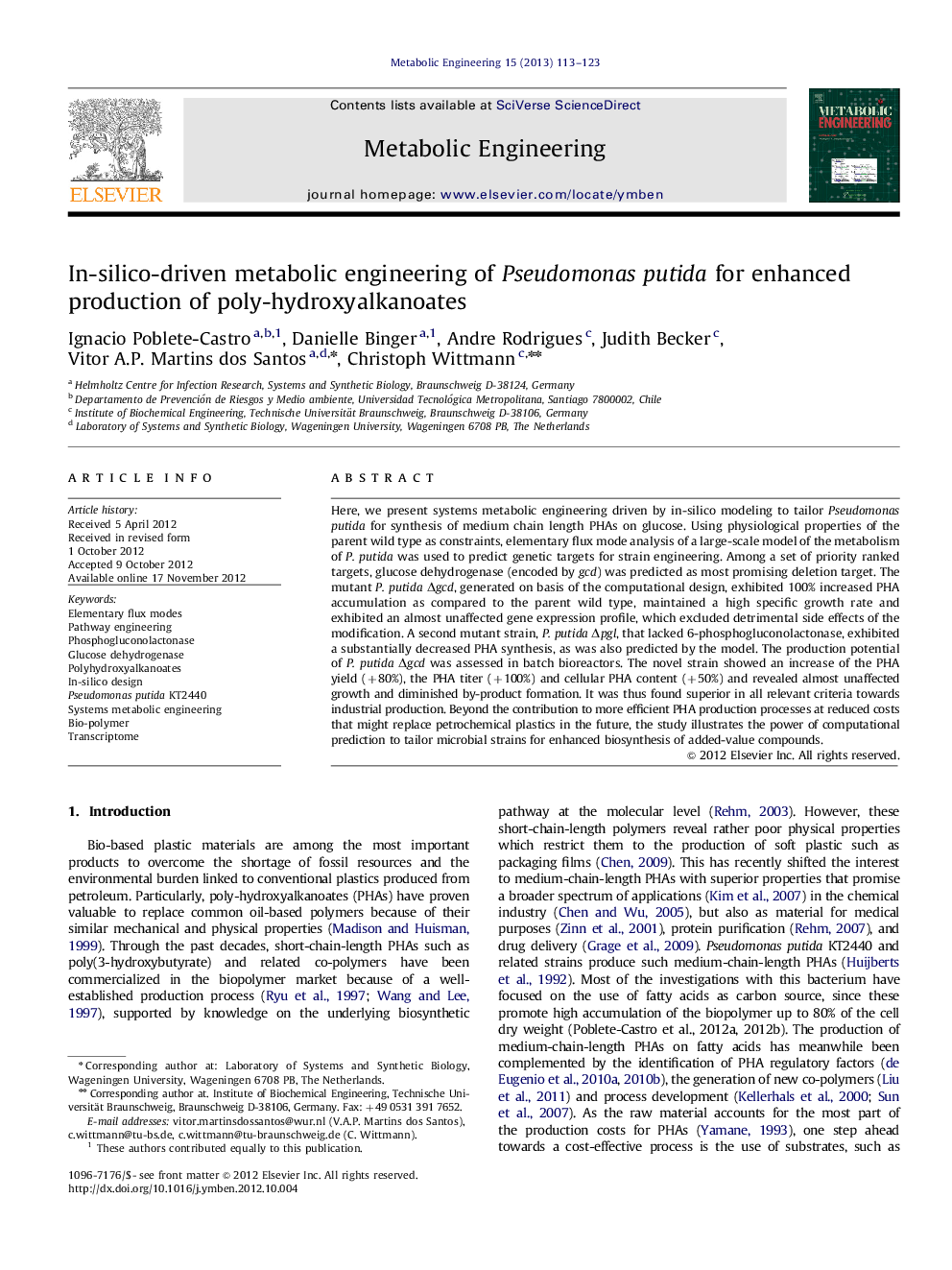| Article ID | Journal | Published Year | Pages | File Type |
|---|---|---|---|---|
| 31654 | Metabolic Engineering | 2013 | 11 Pages |
Here, we present systems metabolic engineering driven by in-silico modeling to tailor Pseudomonas putida for synthesis of medium chain length PHAs on glucose. Using physiological properties of the parent wild type as constraints, elementary flux mode analysis of a large-scale model of the metabolism of P. putida was used to predict genetic targets for strain engineering. Among a set of priority ranked targets, glucose dehydrogenase (encoded by gcd) was predicted as most promising deletion target. The mutant P. putida Δgcd, generated on basis of the computational design, exhibited 100% increased PHA accumulation as compared to the parent wild type, maintained a high specific growth rate and exhibited an almost unaffected gene expression profile, which excluded detrimental side effects of the modification. A second mutant strain, P. putida Δpgl, that lacked 6-phosphogluconolactonase, exhibited a substantially decreased PHA synthesis, as was also predicted by the model. The production potential of P. putida Δgcd was assessed in batch bioreactors. The novel strain showed an increase of the PHA yield (+80%), the PHA titer (+100%) and cellular PHA content (+50%) and revealed almost unaffected growth and diminished by-product formation. It was thus found superior in all relevant criteria towards industrial production. Beyond the contribution to more efficient PHA production processes at reduced costs that might replace petrochemical plastics in the future, the study illustrates the power of computational prediction to tailor microbial strains for enhanced biosynthesis of added-value compounds.
► Superior medium chain length PHA from glucose using Pseudomonas putida. ► In-silico strain design by elementary flux mode analysis. ► Deletion of glucose dehydrogenase increases PHA yield by 60%. ► Global transcription profiling reveals robust core metabolism and no detrimental side effects.
